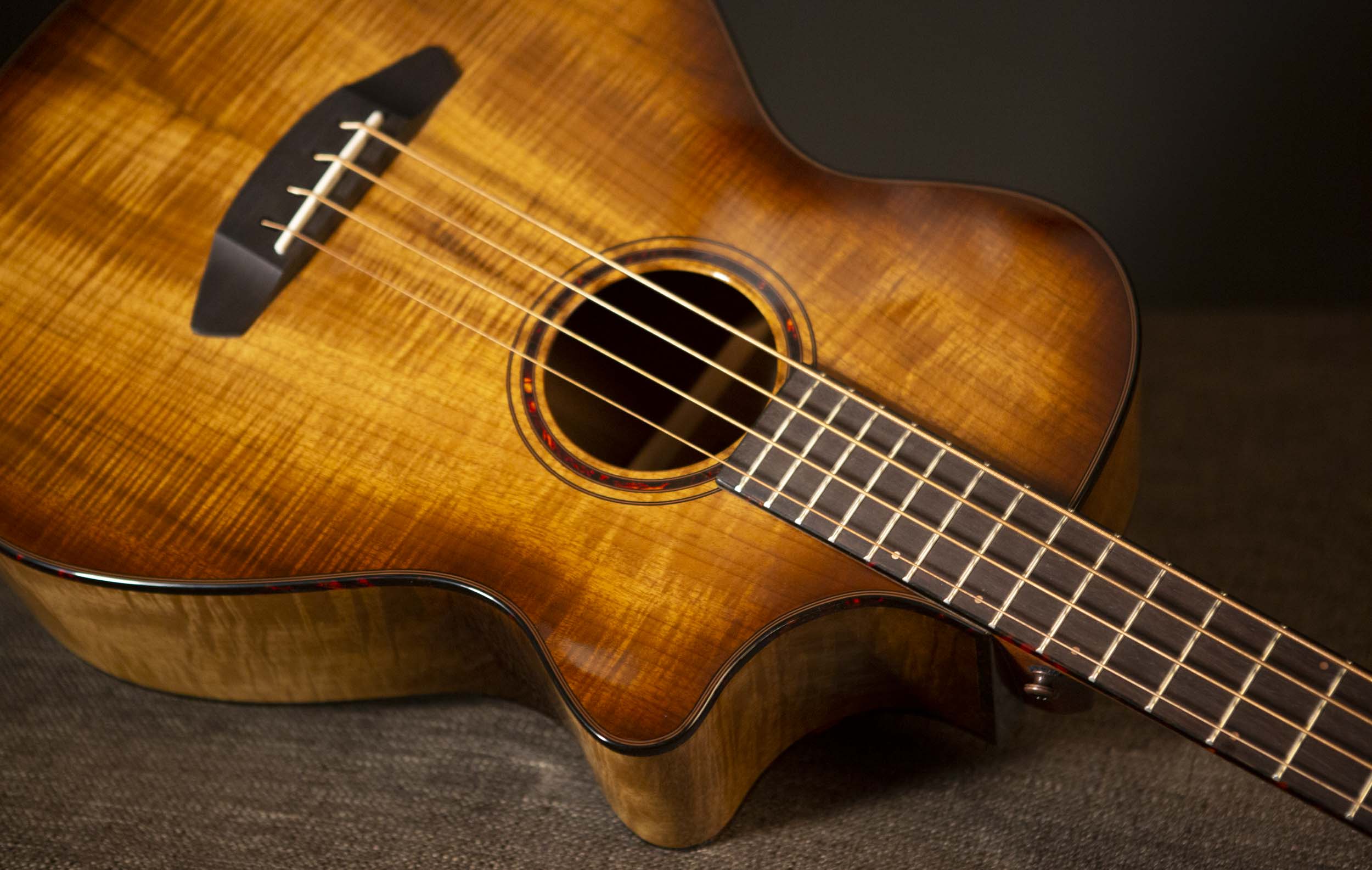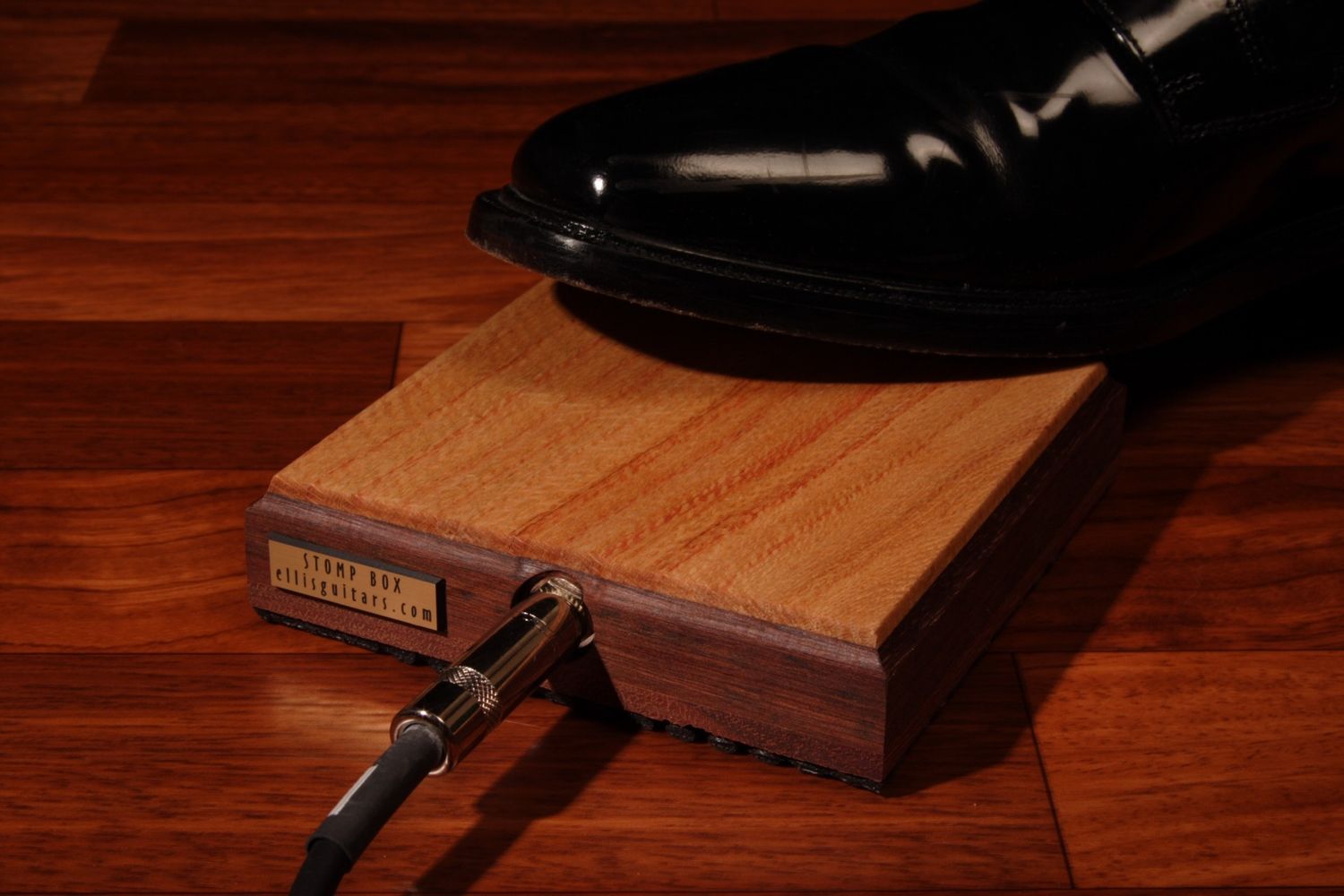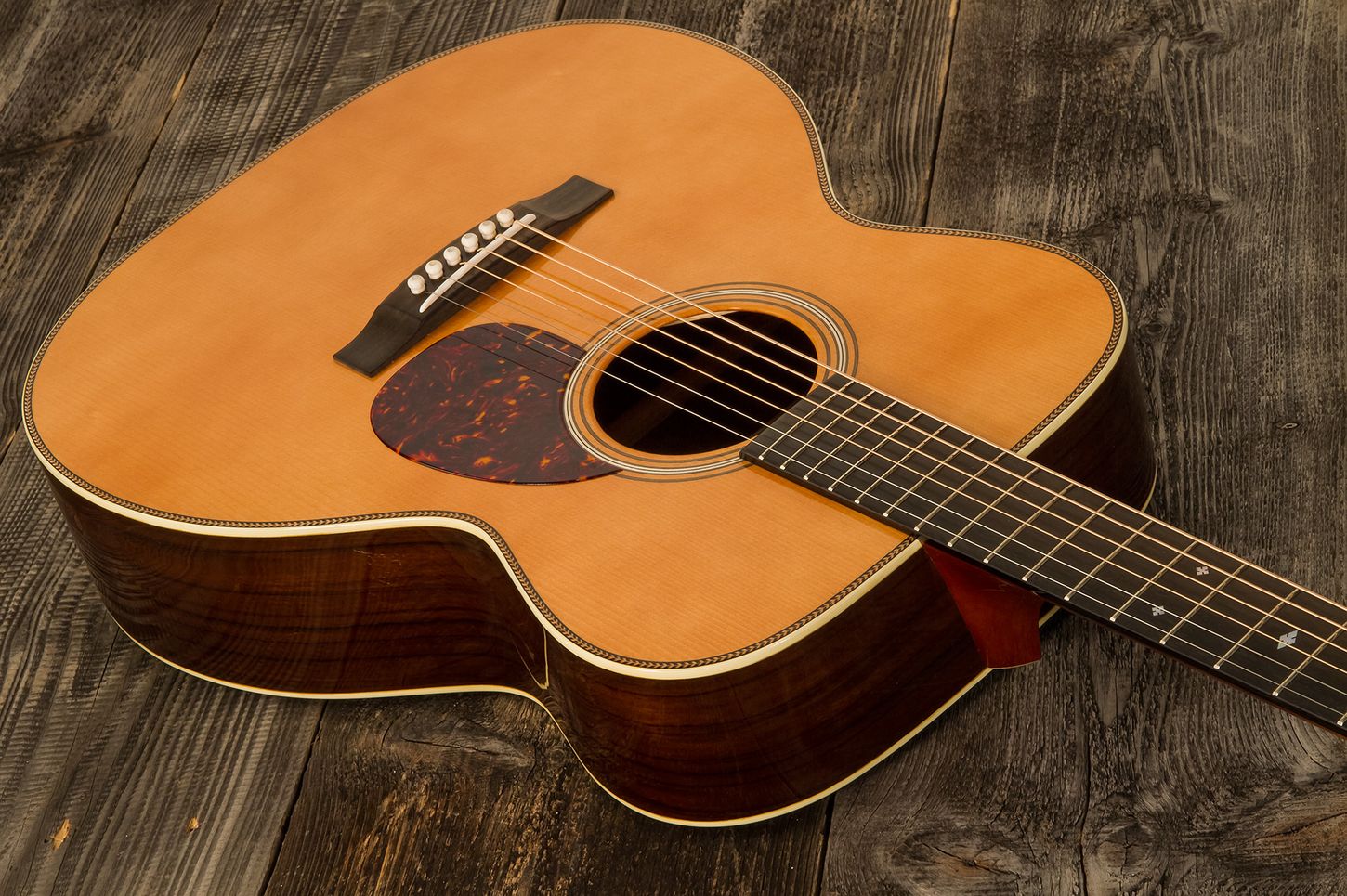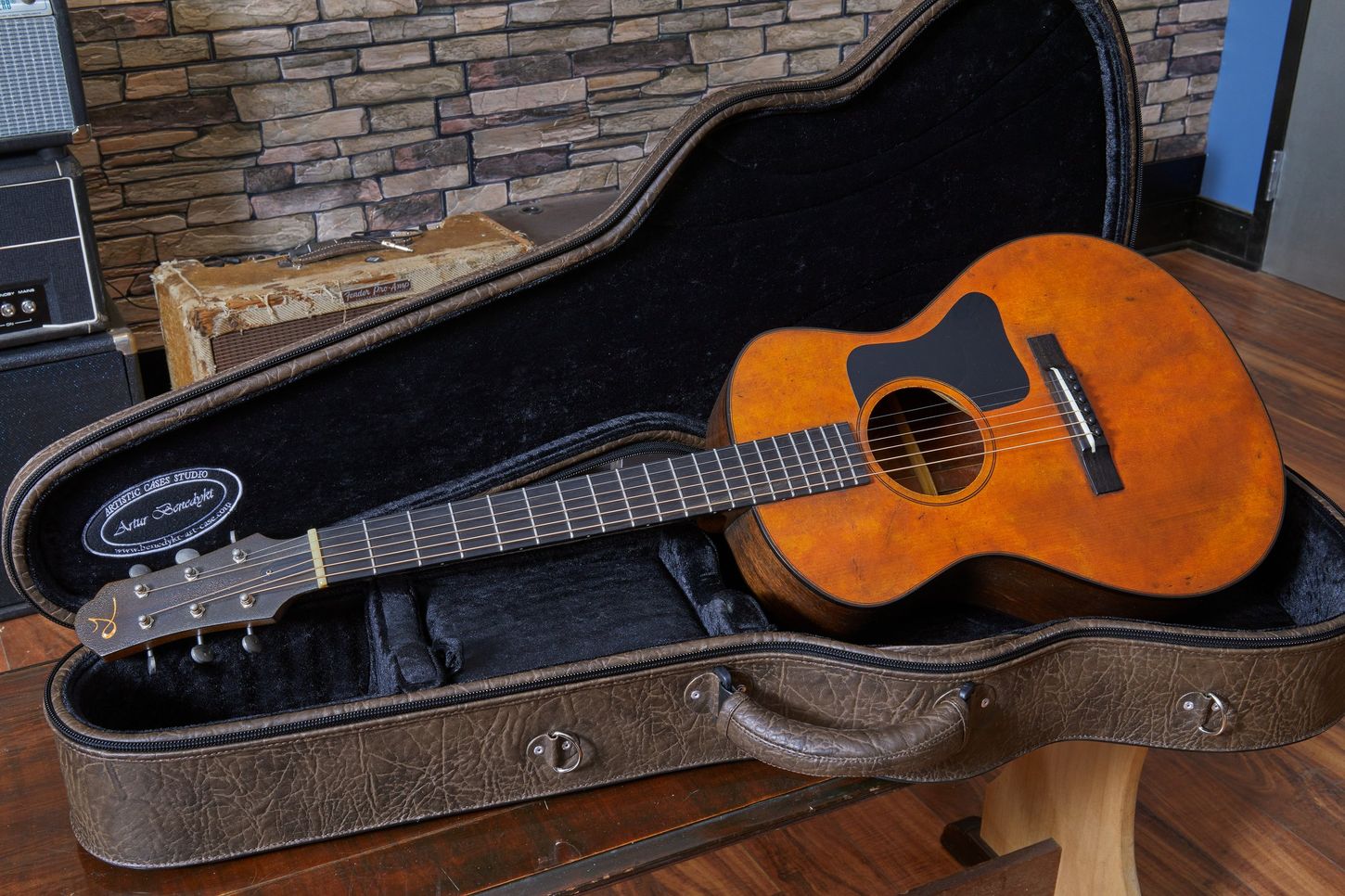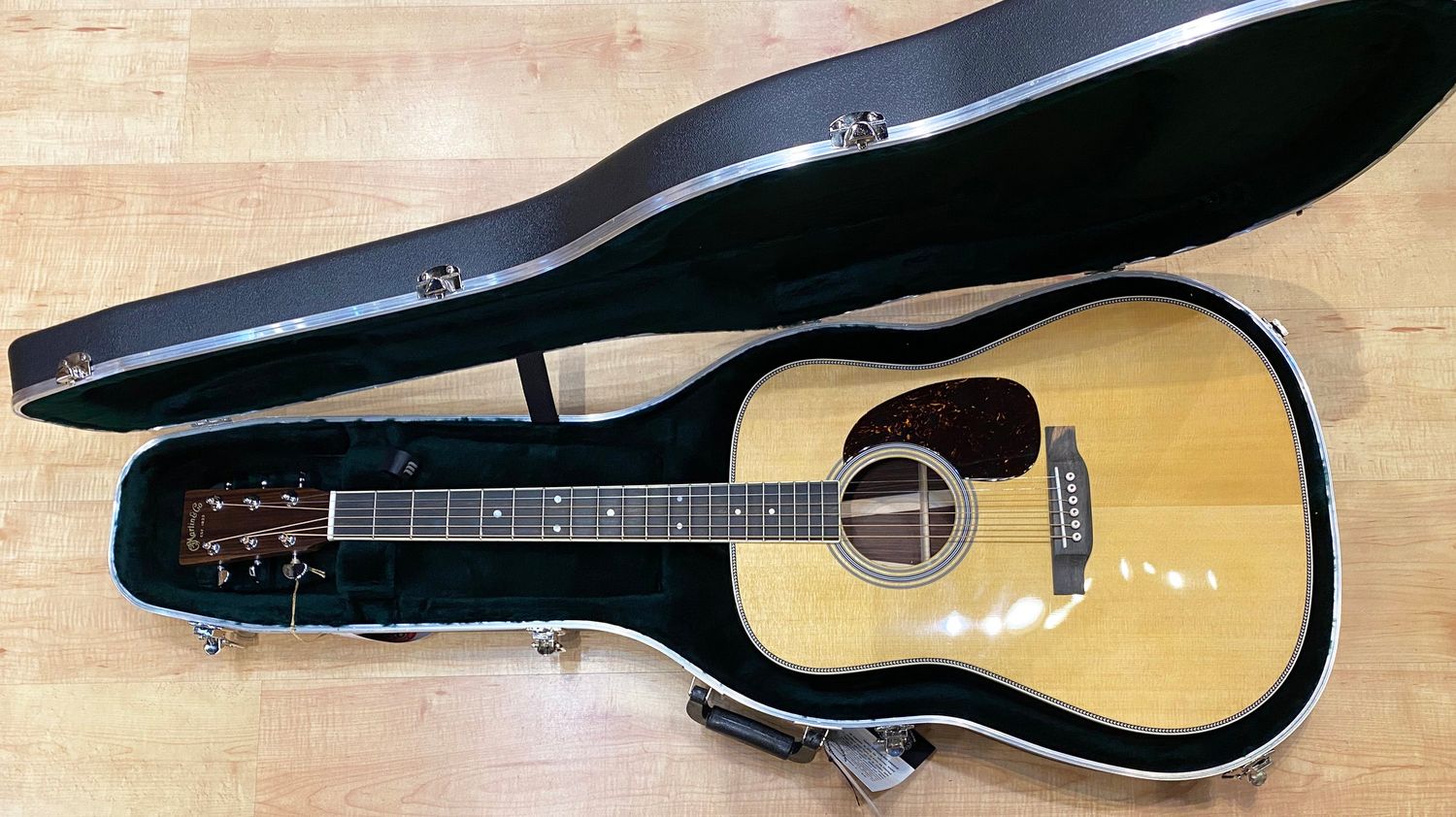Home>Production & Technology>Acoustic>How To Make An Acoustic Guitar Sound Warmer
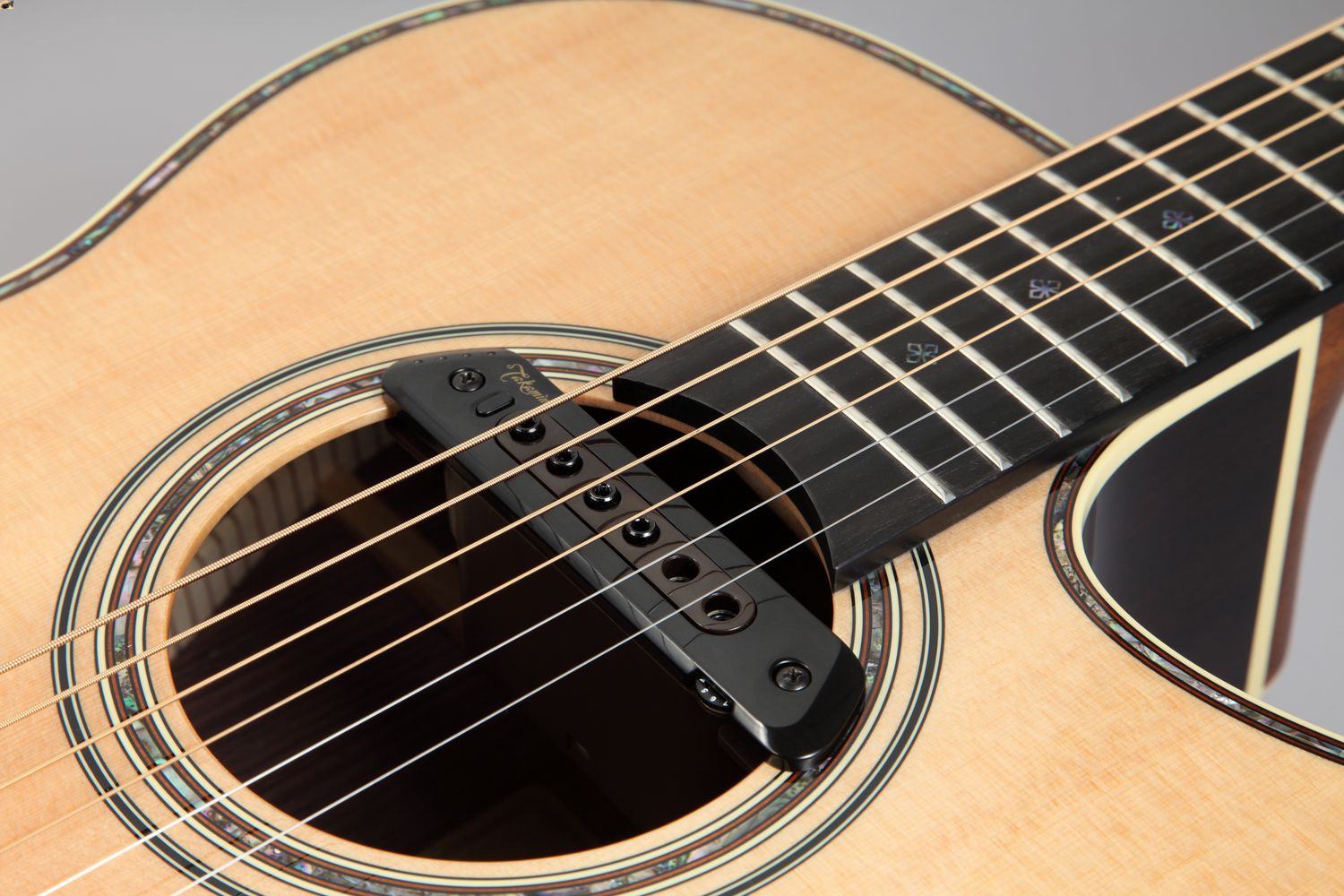

Acoustic
How To Make An Acoustic Guitar Sound Warmer
Published: March 11, 2024
Learn how to make your acoustic guitar sound warmer with these expert tips and techniques. Enhance the tone and depth of your acoustic playing.
(Many of the links in this article redirect to a specific reviewed product. Your purchase of these products through affiliate links helps to generate commission for AudioLover.com, at no extra cost. Learn more)
Table of Contents
Introduction
When it comes to playing the acoustic guitar, achieving the perfect tone is a pursuit that captivates musicians and enthusiasts alike. The warmth of an acoustic guitar's sound is a coveted quality that can elevate a performance or recording, adding depth and richness to the music. Whether you're a seasoned guitarist or a novice player, the quest to make an acoustic guitar sound warmer is a journey that involves a combination of technique, equipment, and understanding the instrument's nuances.
In this comprehensive guide, we will delve into the various methods and techniques that can be employed to enhance the warmth of an acoustic guitar's sound. From selecting the right strings to adjusting the instrument's setup and exploring different playing styles, we will explore the multifaceted approach to achieving a warmer, more resonant tone. Additionally, we will discuss the role of equipment such as picks, soundhole covers, and amplifiers in shaping the acoustic guitar's sound.
Understanding the concept of warmth in the context of acoustic guitars is essential for any musician seeking to refine their sound. It encompasses the richness, depth, and mellowness of the guitar's tone, evoking a sense of intimacy and emotional connection. Whether you're strumming chords for a folk ballad or fingerpicking a soulful melody, the warmth of the acoustic guitar is a defining characteristic that can profoundly impact the listener's experience.
As we embark on this exploration of acoustic guitar warmth, it's important to approach the process with an open mind and a willingness to experiment. Each guitar is unique, and the quest for warmth is as much about discovery as it is about technique. By embracing the nuances of the instrument and the artistry of sound manipulation, we can unlock the full potential of the acoustic guitar and create music that resonates with depth and emotion.
Understanding Warmth in Acoustic Guitars
The concept of warmth in the context of acoustic guitars is multifaceted and deeply intertwined with the instrument's tonal characteristics. When we refer to a guitar's sound as "warm," we are describing a quality that evokes a sense of richness, depth, and mellowness. This warmth is often associated with a full-bodied resonance that creates an intimate and inviting sonic experience for both the player and the listener.
At the heart of warmth in acoustic guitars lies the harmonic complexity of the instrument's tonal output. Unlike the bright and piercing tones of electric guitars, acoustic guitars are prized for their ability to produce a more organic and nuanced sound. The warmth of an acoustic guitar is often attributed to the harmonious blend of low, mid, and high frequencies, resulting in a balanced and sonically pleasing resonance.
Furthermore, the choice of tonewoods used in crafting the guitar significantly influences its warmth. Woods such as mahogany and cedar are renowned for imparting a warm and mellow character to the instrument's sound, while spruce can contribute to a brighter and more articulate tonal profile. The combination of different tonewoods in the guitar's construction can further enhance its warmth, creating a harmonically rich and resonant sonic signature.
The playing technique also plays a pivotal role in shaping the warmth of an acoustic guitar's sound. The manner in which the strings are struck, the pressure applied to the fretboard, and the dynamics of the performance all contribute to the overall tonal warmth. Additionally, the resonance of the guitar's body and the interaction between the vibrating strings and the soundboard are fundamental elements that define the instrument's warmth.
Understanding warmth in acoustic guitars is not merely an exercise in technical analysis; it is an exploration of the emotional and evocative power of music. The warmth of an acoustic guitar has the capacity to convey a wide spectrum of emotions, from the gentle intimacy of a fingerpicked ballad to the soul-stirring resonance of a strummed chord progression. It is a quality that transcends technical specifications and resonates deeply with the human experience, forging a profound connection between the musician, the instrument, and the audience.
In the pursuit of enhancing the warmth of an acoustic guitar's sound, it is essential to appreciate the intricate interplay of craftsmanship, technique, and emotional expression. By embracing the nuances of warmth and seeking to harness its transformative power, musicians can unlock the full potential of the acoustic guitar, creating music that resonates with depth, emotion, and enduring warmth.
Choosing the Right Strings
Selecting the appropriate strings for an acoustic guitar is a crucial step in shaping its tonal characteristics, including warmth. The choice of strings can significantly influence the instrument's overall sound, resonance, and playability. When aiming to enhance the warmth of an acoustic guitar, several factors come into play when selecting the right strings.
One of the primary considerations when choosing strings for warmth is the material from which they are made. Phosphor bronze and silk-and-steel strings are renowned for their ability to impart a warm and mellow tonal quality to the guitar's sound. Phosphor bronze strings, in particular, are favored for their rich and balanced tonal output, making them a popular choice among musicians seeking to enhance the warmth of their acoustic guitars. On the other hand, silk-and-steel strings offer a softer feel and a mellower sound, contributing to a gentle and inviting warmth that can elevate the instrument's sonic character.
Furthermore, the gauge of the strings plays a pivotal role in shaping the acoustic guitar's warmth. Lighter gauge strings tend to produce a brighter and more articulate sound, while heavier gauge strings can enhance the instrument's warmth by emphasizing lower frequencies and providing a fuller, more resonant tone. Finding the right balance between gauge and material is essential in achieving the desired warmth, as it allows for a tailored approach to shaping the guitar's tonal characteristics.
In addition to material and gauge, the winding of the strings also contributes to the instrument's warmth. Roundwound strings are known for their bright and vibrant sound, while flatwound strings offer a smoother and warmer tonal profile. By selecting flatwound or half-round strings, musicians can introduce a warmer and more mellow character to their acoustic guitar's sound, enriching its tonal complexity and enhancing its resonance.
Ultimately, the process of choosing the right strings for an acoustic guitar is a deeply personal and exploratory endeavor. It involves a delicate balance of material, gauge, and winding, all of which contribute to the instrument's warmth and sonic expressiveness. By carefully considering these factors and experimenting with different string configurations, musicians can uncover the ideal combination that elevates the acoustic guitar's warmth, creating a rich, resonant, and emotionally compelling sonic experience.
Adjusting the Action and Neck Relief
Adjusting the action and neck relief of an acoustic guitar is a fundamental aspect of optimizing its playability and tonal characteristics. The action refers to the distance between the strings and the fretboard, while neck relief pertains to the curvature of the guitar's neck. Both factors significantly impact the instrument's playability, intonation, and resonance, making them essential considerations for enhancing the warmth of an acoustic guitar's sound.
When it comes to adjusting the action, finding the optimal balance is crucial. Lowering the action can make the guitar easier to play, particularly for fingerstyle techniques, and can contribute to a brighter and more responsive sound. However, excessively low action may lead to fret buzz and compromise the instrument's resonance. On the other hand, raising the action can enhance the guitar's warmth by allowing the strings to vibrate more freely, resulting in a fuller and more resonant tone. Finding the ideal action height involves careful experimentation and consideration of the player's technique and tonal preferences.
Neck relief, which refers to the curvature of the guitar's neck, also plays a pivotal role in shaping the instrument's tonal characteristics. A slight amount of neck relief is often desirable, as it allows the strings to vibrate without buzzing against the frets. However, excessive neck relief can lead to a lack of clarity and sustain, impacting the guitar's warmth and resonance. By adjusting the truss rod, which controls the neck's curvature, musicians can fine-tune the neck relief to achieve a balance between playability and tonal warmth.
In the pursuit of enhancing the warmth of an acoustic guitar's sound, the adjustment of action and neck relief offers a nuanced and impactful approach. By carefully considering the interplay between action height, neck relief, and tonal characteristics, musicians can tailor the instrument's playability and resonance to align with their artistic vision. This process of fine-tuning the guitar's setup is a testament to the intricate relationship between craftsmanship, technique, and sonic expression, ultimately leading to a more resonant, expressive, and warmly inviting acoustic guitar sound.
Using a Different Pick
The choice of pick can significantly influence the tonal characteristics and warmth of an acoustic guitar's sound. While it may seem like a small and often overlooked aspect of playing the guitar, the pick plays a crucial role in shaping the instrument's resonance, attack, and overall sonic expressiveness.
When aiming to enhance the warmth of an acoustic guitar, experimenting with different picks can yield remarkable results. The material, thickness, and shape of the pick all contribute to the way the strings are struck and the resulting tonal output. For instance, picks made from materials such as nylon, celluloid, or felt can impart a softer and more rounded attack, contributing to a warmer and mellower sound. These materials allow the strings to be struck with a gentler touch, producing a more subdued and resonant tonal character.
In contrast, picks made from materials like tortoiseshell, Ultex, or stone can offer a brighter and more articulate attack, emphasizing the higher frequencies and providing a crisper tonal profile. While these picks may enhance clarity and precision, they can also introduce a sharper and less warm sound compared to their softer counterparts.
Furthermore, the thickness of the pick plays a significant role in shaping the acoustic guitar's warmth. Thinner picks tend to produce a softer and more delicate attack, allowing for a smoother and more mellow tonal output. On the other hand, thicker picks offer a more robust attack, emphasizing the guitar's midrange and low-end frequencies, resulting in a fuller and more resonant sound.
The shape of the pick also influences the way the strings are engaged, affecting the instrument's warmth and sonic character. Rounded picks produce a more fluid and rounded attack, contributing to a mellower and more inviting sound, while sharper picks offer a more defined and precise attack, enhancing clarity and articulation.
In the pursuit of enhancing the warmth of an acoustic guitar's sound, the exploration of different picks offers a versatile and accessible approach. By experimenting with various materials, thicknesses, and shapes, musicians can uncover the ideal pick that complements the instrument's tonal characteristics, creating a rich, resonant, and emotionally compelling sonic experience.
Changing the Playing Style
Exploring different playing styles is a transformative approach to enhancing the warmth of an acoustic guitar's sound. The way in which the strings are plucked, the dynamics of the performance, and the overall technique employed by the musician profoundly influence the instrument's tonal characteristics and resonance. By embracing a diverse range of playing styles, musicians can unlock new dimensions of warmth and sonic expressiveness, elevating their acoustic guitar's sound to captivating heights.
Fingerstyle playing, characterized by the use of fingers to pluck the strings, offers a nuanced and intimate approach to enhancing the warmth of an acoustic guitar. The gentle and intricate nature of fingerstyle technique allows for the creation of rich, resonant tones, evoking a sense of depth and emotional connectivity. By exploring fingerstyle patterns, arpeggios, and chord voicings, musicians can infuse their acoustic guitar's sound with a captivating warmth that resonates with subtlety and grace.
In contrast, strumming techniques introduce a dynamic and rhythmic dimension to the acoustic guitar's warmth. The manner in which the strings are strummed, the intensity of the strumming motion, and the use of percussive elements contribute to the instrument's tonal richness and resonance. By varying the strumming patterns, exploring rhythmic accents, and incorporating percussive techniques, musicians can harness the full potential of the acoustic guitar's warmth, creating a vibrant and inviting sonic tapestry.
Furthermore, the exploration of hybrid picking, which combines fingerstyle plucking with the use of a pick, offers a versatile and expressive approach to enhancing the warmth of an acoustic guitar. This technique allows for the simultaneous articulation of melody, harmony, and rhythm, resulting in a layered and resonant sonic landscape. By integrating hybrid picking into their playing style, musicians can expand the tonal palette of the acoustic guitar, infusing it with warmth, clarity, and expressive depth.
The process of changing the playing style to enhance the warmth of an acoustic guitar's sound is a testament to the instrument's versatility and expressive potential. By embracing diverse techniques, exploring new playing styles, and pushing the boundaries of sonic creativity, musicians can unlock a world of warmth and resonance within their acoustic guitar, creating music that captivates the senses and resonates with emotional depth.
Using a Soundhole Cover
Introducing a soundhole cover to an acoustic guitar is a simple yet effective method for enhancing its warmth and resonance. This unassuming accessory, typically made of rubber or plastic, is designed to cover the soundhole of the guitar, thereby altering its acoustic properties and tonal characteristics.
By placing a soundhole cover over the soundhole, musicians can achieve a more pronounced and resonant low-end response from the guitar. This is particularly beneficial for players seeking to enrich the instrument's warmth and depth, as the cover restricts the escape of air from the soundhole, leading to a more pronounced bass and midrange response. The resulting tonal profile is characterized by a fuller and more resonant sound, imbuing the acoustic guitar with a captivating warmth and depth that enhances its sonic expressiveness.
Furthermore, a soundhole cover can mitigate feedback issues when amplifying the acoustic guitar. By reducing the potential for acoustic feedback, particularly in live performance settings, the cover allows for higher volume levels without compromising the instrument's warmth and tonal integrity. This is especially advantageous for musicians seeking to amplify their acoustic guitar while preserving its rich and resonant acoustic qualities.
In addition to its tonal benefits, a soundhole cover can also serve as a creative tool for sonic experimentation. By partially covering the soundhole or using adjustable soundhole covers, musicians can fine-tune the instrument's resonance and warmth, tailoring its tonal characteristics to suit a wide range of musical styles and performance contexts. This versatility empowers musicians to explore new sonic possibilities and unlock the full expressive potential of their acoustic guitar.
In the pursuit of enhancing the warmth of an acoustic guitar's sound, the incorporation of a soundhole cover offers a versatile and accessible approach. Whether seeking to enrich the instrument's acoustic properties, mitigate feedback issues, or explore new sonic dimensions, the soundhole cover stands as a valuable tool for shaping the acoustic guitar's tonal characteristics and elevating its warmth and resonance to captivating heights.
Adjusting the EQ on Your Amplifier or PA System
Adjusting the EQ (equalization) on your amplifier or PA system is a pivotal step in shaping the warmth and tonal characteristics of an acoustic guitar's sound. The EQ controls, including bass, midrange, and treble adjustments, offer a powerful means of tailoring the instrument's sonic profile to achieve a rich, resonant, and emotionally compelling sound.
When aiming to enhance the warmth of an acoustic guitar, the EQ settings provide a versatile toolkit for sculpting its tonal characteristics. By carefully adjusting the bass frequencies, musicians can enrich the instrument's low-end response, adding depth and fullness to the sound. This can be particularly beneficial for achieving a warmer and more resonant tonal profile, as the enhanced bass frequencies contribute to a fuller and more immersive sonic experience.
Furthermore, the midrange frequencies play a crucial role in shaping the acoustic guitar's warmth and presence. By fine-tuning the midrange EQ settings, musicians can emphasize the instrument's harmonic richness and tonal complexity, resulting in a more expressive and emotionally resonant sound. The midrange adjustments allow for the enhancement of the guitar's fundamental tonal characteristics, creating a captivating warmth that engages the listener on a profound emotional level.
In addition to bass and midrange adjustments, the treble frequencies offer a means of refining the acoustic guitar's warmth and articulation. By carefully adjusting the treble EQ settings, musicians can introduce clarity and definition to the instrument's high-end frequencies, enhancing its overall tonal balance and sonic expressiveness. This enables the creation of a warm and inviting tonal profile that resonates with clarity and depth, elevating the acoustic guitar's sound to captivating heights.
The process of adjusting the EQ on your amplifier or PA system is a testament to the transformative power of sonic manipulation. By harnessing the capabilities of EQ controls, musicians can tailor the acoustic guitar's tonal characteristics to align with their artistic vision, creating a rich, resonant, and emotionally compelling sonic experience that captivates the senses and resonates with depth and warmth.
Conclusion
In the realm of acoustic guitar mastery, the pursuit of warmth is a journey that transcends technical proficiency and delves into the realm of emotional resonance. Throughout this comprehensive guide, we have explored a myriad of techniques and methods aimed at enhancing the warmth of an acoustic guitar's sound. From the selection of strings and the adjustment of the instrument's setup to the exploration of playing styles and the utilization of sonic accessories, the quest for warmth is a multifaceted endeavor that intertwines craftsmanship, technique, and sonic expression.
At its core, the warmth of an acoustic guitar represents a harmonious convergence of tonal richness, depth, and emotional connectivity. It embodies the capacity of the instrument to evoke a profound sense of intimacy and resonance, forging a deep and enduring connection between the musician, the instrument, and the listener. The pursuit of warmth is not merely a technical exercise; it is an exploration of the instrument's transformative power to convey a wide spectrum of emotions, from gentle introspection to soul-stirring passion.
As we conclude this exploration, it is essential to emphasize the deeply personal and artistic nature of the quest for warmth in acoustic guitars. Each musician embarking on this journey brings a unique perspective, a distinct sonic vision, and a profound emotional narrative to the process. The techniques and methods discussed in this guide serve as a foundation for experimentation, exploration, and creative expression, empowering musicians to unlock the full potential of their acoustic guitars and create music that resonates with depth, emotion, and enduring warmth.
Ultimately, the quest for warmth in acoustic guitars is a testament to the instrument's timeless allure and its capacity to transcend technical specifications and resonate deeply with the human experience. It is a pursuit that celebrates the artistry of sound manipulation, the craftsmanship of instrument construction, and the emotional depth of musical expression. By embracing the nuances of warmth and seeking to harness its transformative power, musicians can unlock the full potential of the acoustic guitar, creating music that resonates with depth, emotion, and enduring warmth.




